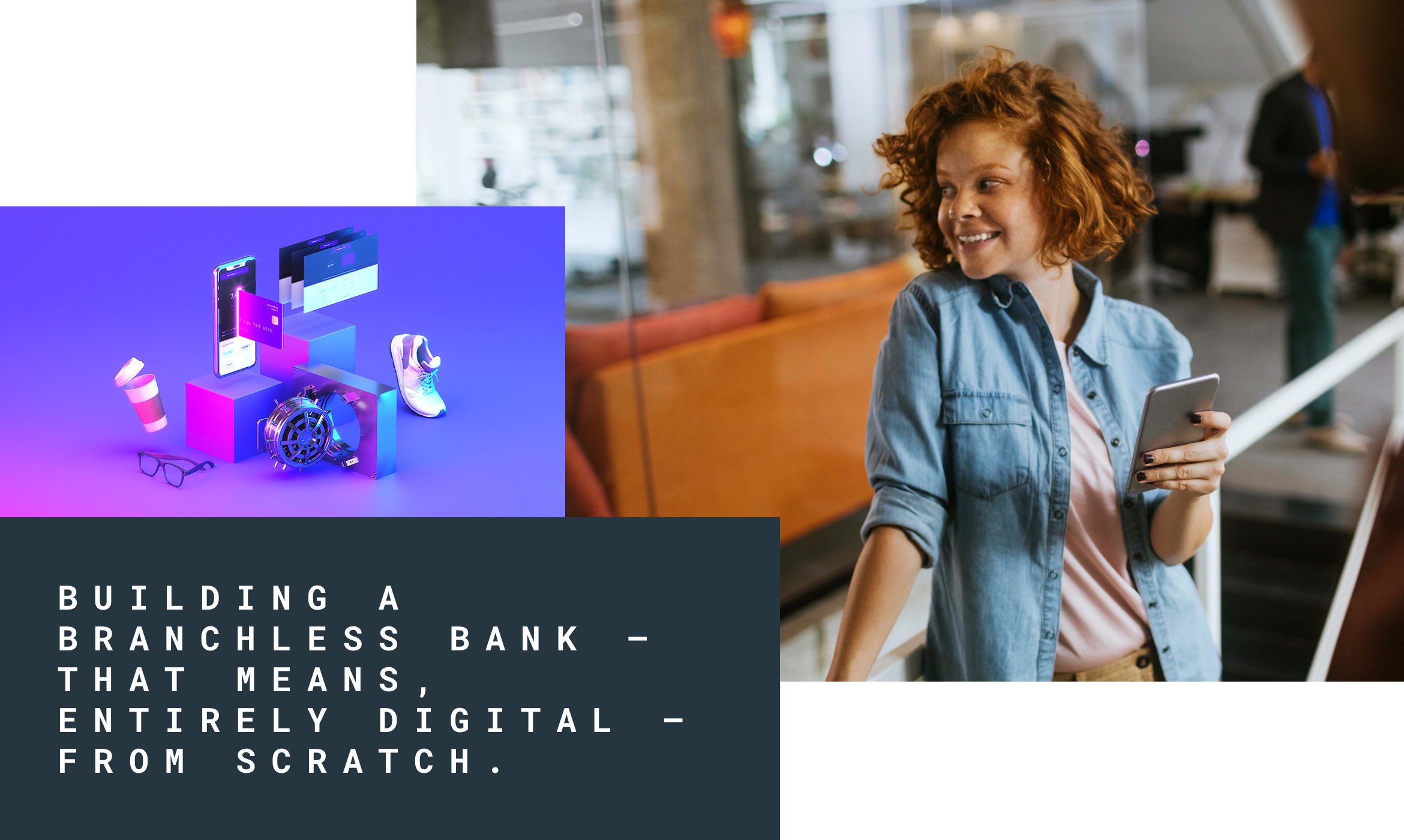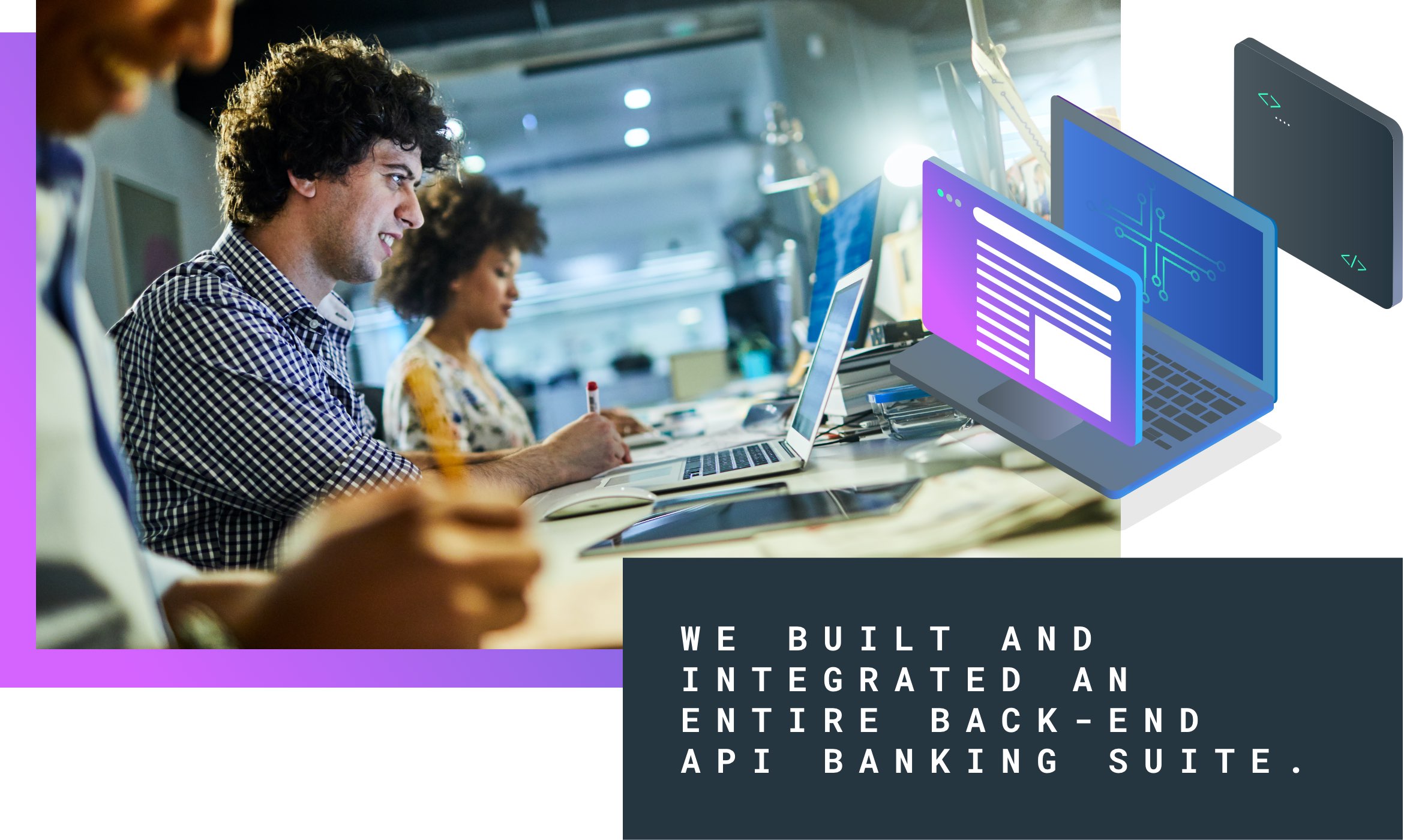The ask
An entrepreneurial bank spotted an opportunity in the US banking industry: they wanted to fill a gap between consumer banking and large enterprise banking services to better serve the growing market of freelancers and small companies.
Supported by the bank’s mothership, a spin-off team of entrepreneurs set about building a branchless bank – that means, entirely digital – from scratch. Through previous projects, the team had already built a close and trusted relationship with Intelygenz, so we were asked to support the development of the digital bank’s mobile app – from developing the back end, through to proof of concept and go live.
Our key objectives were to develop product functionalities including powerful self-serve tools, personalisation and authentication, and seamless integration with the bank’s customer focused operational processes. These capabilities would enable our client to attract users to the new digital offering and build an initial customer base.


What we did
Working with the spin-off team, we defined a technical architecture that supported the bank’s vision. Our approach allowed rapid market deployment of an MVP banking service, with real-world testing of the product market to guide its direction.
We also built mobile app functionalities that empowered end-users to self-serve. Examples include the ability to update personal data – such as addresses and pin numbers, an envelope feature that enabled apportion of funds to different budgets, and the digital capture of cheques for electronic deposits.
Intelligent Process Automation driven by A.I. models in both the back and front end played a vital role throughout the project, enabling the solution to minimize maintenance costs while ensuring robust security of all customer and business data.
The process
First we built and integrated an entire back-end API banking suite to link the front-end offerings to a core banking infrastructure.
This suite included integrations with multiple third-party providers, enabling automation of several key processes.
Automated processes included obtaining the risk rate of new credit customers for approval during onboarding, the scheduling of jobs such as creation of monthly statements, address updates, and the continuous delivery of new features.
Our mobile team used a combination of best practice development approaches to create and maintain the mobile application. This was done with a strong testing culture involving Acceptance Test Driven Development (ATDD), a focus on DevOps, and the scrum methodology.


Results
With the mobile application in full working production, the bank was able to attract a customer base of over ten thousand freelancers and small business owners. Self-service tools empowered these users to bank on their own terms, with convenient and personalised experiences. This led to an impressive adoption rate of 90% among customers who signed up for the service.
Automation of back end processes enabled significant time and cost savings throughout development, facilitating the bank’s objective to keep its new digital offering a fee-free service. The development testing practices used also ensured an incredibly low rate of technical incidents and enabled the continuous development and deployment of new features, updates, and patches with speed and efficiency.
OF CUSTOMERS ADOPTED THE MOBILE APP


